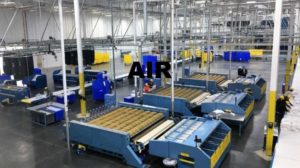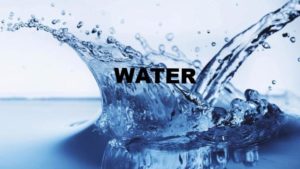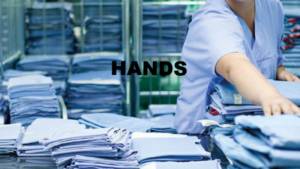
A new resource is available from the Healthcare Laundry Accreditation Council (HLAC) called the HLAC Laundry Process Monitoring Toolkit™. It validates the effectiveness of a laundry’s processes by measuring the number of microorganisms found in a laundry on hard surfaces, in the air, on linen, in the water and on employee hands.
Final phase testing of the new toolkit is expected to be completed by the first quarter of this year, with a formal international laundry shortly thereafter.
Currently, a cross-section of healthcare laundries – HLAC accredited and non-accredited – are part of a control group to substantiate the new toolkit’s performance through a testing process.
 “HLAC has developed the Laundry Process Monitoring Toolkit to respond to the challenge for operators to continually know how well their processes are performing and whether their standards are on target as originally intended,” said Gregory Gicewicz, who heads the committee developing the toolkit on behalf of HLAC.
“HLAC has developed the Laundry Process Monitoring Toolkit to respond to the challenge for operators to continually know how well their processes are performing and whether their standards are on target as originally intended,” said Gregory Gicewicz, who heads the committee developing the toolkit on behalf of HLAC.
HLAC is a nonprofit organization that inspects and accredits laundries processing textiles for hospitals, nursing homes and other healthcare facilities.
“Responsible healthcare laundries go to great lengths to maintain the highest standards in the name of hygiene and infection prevention,” said HLAC President-Elect Linda McCurdy. “Moreover, laundries that are accredited by HLAC have set in place numerous in-plant processes to provide their healthcare customers hygienically clean linen. Our toolkit goes a long way to safeguarding all of these endeavors.”
Final-phase testing is expected to be completed by the first quarter of next year, with a formal international launch of the new toolkit shortly thereafter.
 Prior to the final-phase testing, several healthcare laundry operators volunteered to pilot the toolkit concept in their facilities, including Gicewicz; McCurdy; HLAC Secretary/Treasurer Myles Noel; HLAC Board Member Rocco Romeo, and Judy Reino, CEO of Reino Linen Service in Gibsonburg, Ohio. In addition to being on HLAC’s board, Gicewicz is president of Sterile Surgical Systems of Tumwater, WA; McCurdy is president and CEO of K-Bro Linen Systems Inc.; Noel is CEO of Central Ohio Medical Textiles (COMTEX), Columbus, Ohio; Romeo is CEO of HLS Linen Services, Ottawa, Ontario, Canada.
Prior to the final-phase testing, several healthcare laundry operators volunteered to pilot the toolkit concept in their facilities, including Gicewicz; McCurdy; HLAC Secretary/Treasurer Myles Noel; HLAC Board Member Rocco Romeo, and Judy Reino, CEO of Reino Linen Service in Gibsonburg, Ohio. In addition to being on HLAC’s board, Gicewicz is president of Sterile Surgical Systems of Tumwater, WA; McCurdy is president and CEO of K-Bro Linen Systems Inc.; Noel is CEO of Central Ohio Medical Textiles (COMTEX), Columbus, Ohio; Romeo is CEO of HLS Linen Services, Ottawa, Ontario, Canada.
The Hubble Telescope of Microorganism Identification
Gicewicz said HLAC’s toolkit, which employs a proprietary extraction technique designed to recover a more accurate representation of bioburden load on laundry media, is vastly different in scale from anything else currently available in the industry.
“In simplified terms, our toolkit does for microorganism identification what the Hubble Telescope does for astronomy,” Gicewicz said. “Everything else that is currently available is like trying to look at the stars through a pair of opera glasses.”
 He continued, saying, “Our toolkit more accurately identifies microorganisms contained on the top surface of linen and more – including anywhere on and within linen. Analysis will provide Total Aerobic Microbial Counts (TAMC), Total Yeast and Mold Counts (TYMC), and anaerobic spore forming bacteria such as Clostridium difficile (C. diff).”
He continued, saying, “Our toolkit more accurately identifies microorganisms contained on the top surface of linen and more – including anywhere on and within linen. Analysis will provide Total Aerobic Microbial Counts (TAMC), Total Yeast and Mold Counts (TYMC), and anaerobic spore forming bacteria such as Clostridium difficile (C. diff).”
“Additionally, the toolkit helps the operator to isolate and identify potential problem areas that can become contaminated in between processes – areas that in the past might have not been apparent through visual inspection alone,” Gicewicz said.
How the Process Monitoring Toolkit Works
Upon ordering from HLAC, the Healthcare Laundry Process Monitoring Toolkit is delivered to the laundry. It contains detailed instructions and all of the supplies and materials necessary to collect samples.
 Monitoring comprises five areas (linen, surfaces, air, water and hands), each with multiple tests. It takes approximately 14 to 18 person hours to complete, whereupon the samples are returned to an independent lab for analysis using validated recovery procedures. The monitoring can be performed at the laundry’s convenience – one time, quarterly, semiannually, etc.
Monitoring comprises five areas (linen, surfaces, air, water and hands), each with multiple tests. It takes approximately 14 to 18 person hours to complete, whereupon the samples are returned to an independent lab for analysis using validated recovery procedures. The monitoring can be performed at the laundry’s convenience – one time, quarterly, semiannually, etc.
Results, which are kept confidential, are communicated directly to the laundry. With the data in hand, the laundry may adjust accordingly the effectiveness of its overall plant hygiene, wash and hand-hygiene processes. This includes general comparative data for evaluating before and after conditions of cleaning processes, and the effects of process modifications and/or system improvements. It also provides trending data over time (e.g., reasons for process variability) for determining process consistency and identifying opportunities for improvements.
In addition to using the results of their process monitoring to safeguard operational standards,Gicewicz said it is the prerogative of the tested laundry whether to share the results externally.
 “We see our Healthcare Laundry Process Monitoring Toolkit as similar to HLAC accreditation itself,” said Gicewicz. “It’s a quality control resource that also provides a healthcare laundry a marketing opportunity and a competitive advantage. It’s something the laundry can choose to tout to its customers.
“We see our Healthcare Laundry Process Monitoring Toolkit as similar to HLAC accreditation itself,” said Gicewicz. “It’s a quality control resource that also provides a healthcare laundry a marketing opportunity and a competitive advantage. It’s something the laundry can choose to tout to its customers.
“For the healthcare customer, knowing their laundry is HLAC accredited and that it regularly employs HLAC’s Process Monitoring Toolkit provides the customer with the peace of mind that their laundry is operating to the highest standards for infection prevention and patient safety,” he said.












